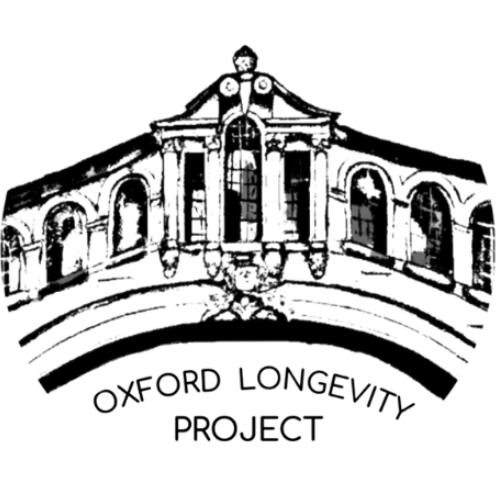hallmark 2: Why do we age? Exploring Telomere Loss
Today we continue our Hallmarks of Ageing series with the second hallmark: Telomere shortening. Like the first hallmark, this one revolves around DNA, which is central to our physiological makeup!
Understanding Telomere Attrition
What is Telomere Attrition?
Telomere attrition refers to the gradual shortening of the protective ends of chromosomes with each cell division [1] – imagine telomeres as the plastic caps on the end of shoelaces that prevent fraying. Cells divide to allow our bodies to grow, replace damaged cells, and heal injuries, which are essential processes for maintaining health. Over time, this shortening leads to a point known as the Hayflick limit, which is like a built-in limit on how many times a cell can divide [2]. Once this limit is reached, cells can't divide anymore and may die or become inactive (cellular senescence). This natural limit helps prevent cells from growing out of control, but it also means that our bodies' ability to repair and regenerate tissues slows down over time, contributing to ageing and age-related health issues. This presents a catch-22, as telomere shortening serves as a protective mechanism against uncontrolled cell growth, yet it also contributes to ageing.
How Your Body Defends Against Telomere Attrition
Your body has many ways to protect telomeres including telomerase*, an enzyme that replenishes telomere length. Telomerase is active in specific cells, including stem and immune cells, which helps them maintain telomeres and continue dividing, supporting tissue regeneration for longer periods than most other cells [4].The body also uses antioxidant systems to neutralize free radicals* and reduce oxidative stress, a major cause of telomere shortening, and regulates inflammation to protect telomeric DNA from unnecessary damage [3].
Future Directions
Preserving telomere length supports healthy cellular processes, yet it’s equally important to maintain this within a natural range, as imbalance in either direction can pose challenges.
When telomeres remain excessively long - often as a result of heightened telomerase activity - cells can evade the intrinsic signals that ordinarily limit their replication, such as senescence or programmed cell death. Over time, this unrestrained proliferation can give rise to abnormal cell growth which can contribute to health complications. It’s a clear example of how too much of a good thing can become detrimental, underscoring that, in cellular biology, maintaining balance is not just beneficial, but essential.
Therefore, maintaining telomere health through well-regulated approaches holds promise for targeting this hallmark and supporting healthy ageing without disrupting natural cellular balance.
A key focus of current research is finding safe and effective ways to support healthy cells, especially stem cells, which naturally express telomerase and play a crucial role in tissue repair and regeneration. For instance, some research has shown that reactivating telomerase in adult mice with severe telomere dysfunction reversed multi-system degeneration, including neurodegeneration and organ decline, suggesting telomerase reactivation could hold promise for age-related conditions [4-6]. These findings suggest that, with a deeper understanding of how telomere length is regulated at the molecular level, future therapies could harness this potential to promote healthy ageing.
Healthy behaviours can combat Telomere Attrition
Among the myriad benefits of a healthy lifestyle, is the ability to influence telomere health. By adopting some or all of the behaviours below, you can help delay telomere shortening, contributing to improved cellular function and overall well-being. Importantly, these behaviours promote balance, helping to preserve telomeres within a healthy range. Consider the following:
Regular Exercise: Moderate-to-vigorous physical activity enhances telomerase activity, maintaining telomere length and supporting healthy ageing
Balanced Diet: A diet rich in antioxidants and anti-inflammatory nutrients (e.g., Mediterranean diet) reduces oxidative stress and inflammation, which accelerates telomere shortening.
Stress Management: Practices like mindfulness and meditation help manage stress and reduce cortisol, which is linked to telomere erosion.
Adequate Sleep: Sufficient sleep supports cellular repair processes and protects telomeres from damage due to deprivation.
Antioxidants & Anti-Inflammatory Interventions: Foods or supplements with antioxidants (e.g., vitamins C and E) and anti-inflammatory compounds (e.g., omega-3, fatty acids) can protect telomeres from oxidative damage.
Vocab
Telomeres: Protective caps at the ends of chromosomes, preventing DNA damage and maintaining chromosomal stability. They shorten with each cell division.
Chromosomes: Organised structures of DNA that carry genetic information. Humans have 46 chromosomes arranged in 23 pairs.
Shelterin: A protein complex that binds to telomeres, protecting them from being recognised as damaged DNA and preventing unwanted DNA repair processes.
Free Radicals: Unstable molecules that can damage cells, proteins, and DNA. Antioxidants neutralise free radicals, protecting cells from oxidative stress.
References
[1] Bekaert S, De Meyer T, Van Oostveldt P. Telomere attrition as ageing biomarker. Anticancer Res. 2005 Jul-Aug;25(4):3011-21. PMID: 16080560
[2] Shay, J., Wright, W. Hayflick, his limit, and cellular ageing. Nat Rev Mol Cell Biol 1, 72–76 (2000). https://doi.org/10.1038/35036093
[3] Prasad KN, Wu M, Bondy SC. Telomere shortening during aging: Attenuation by antioxidants and anti-inflammatory agents. Mech Ageing Dev. 2017 Jun;164:61-66. doi: 10.1016/j.mad.2017.04.004
[4] El Assaad N, Chebly A, Salame R, Achkar R, Bou Atme N, Akouch K, Rafoul P, Hanna C, Abou Zeid S, Ghosn M, Khalil C. Anti-aging based on stem cell therapy: A scoping review. World J Exp Med. 2024 Sep 20;14(3):97233. doi: 10.5493/wjem.v14.i3.97233
[5] El Assaad N, Chebly A, Salame R, Achkar R, Bou Atme N, Akouch K, Rafoul P, Hanna C, Abou Zeid S, Ghosn M, Khalil C. Anti-aging based on stem cell therapy: A scoping review. World J Exp Med. 2024 Sep 20;14(3):97233. doi: 10.5493/wjem.v14.i3.97233
[6] Jaskelioff M, Muller FL, Paik JH, Thomas E, Jiang S, Adams AC, Sahin E, Kost-Alimova M, Protopopov A, Cadiñanos J, Horner JW, Maratos-Flier E, Depinho RA. Telomerase reactivation reverses tissue degeneration in aged telomerase-deficient mice. Nature. 2011 Jan 6;469(7328):102-6. doi: 10.1038/nature09603. Epub 2010 Nov 28. PMID: 21113150; PMCID: PMC3057569
Authors: Georgia Pilling and Katsume Stoneham
